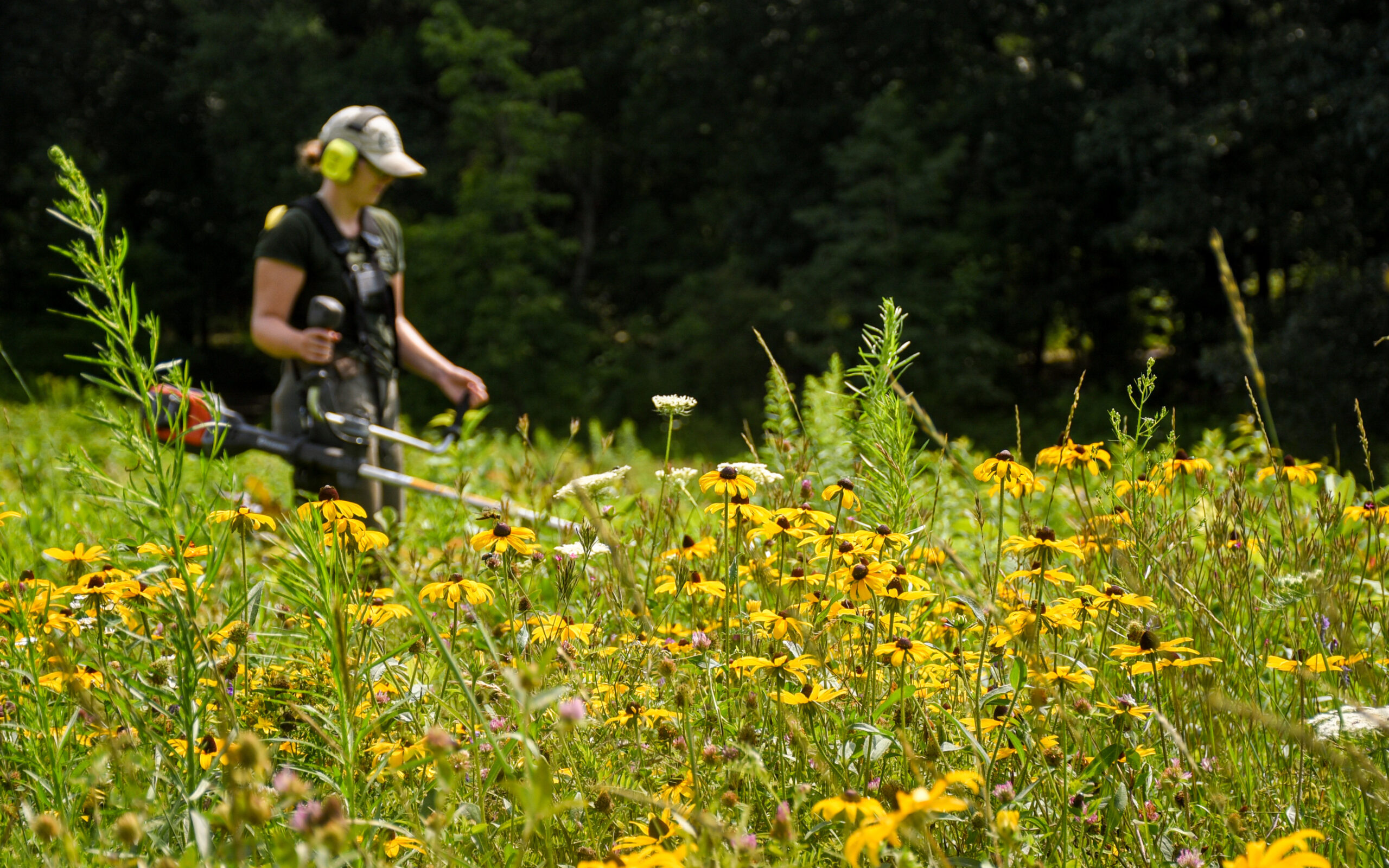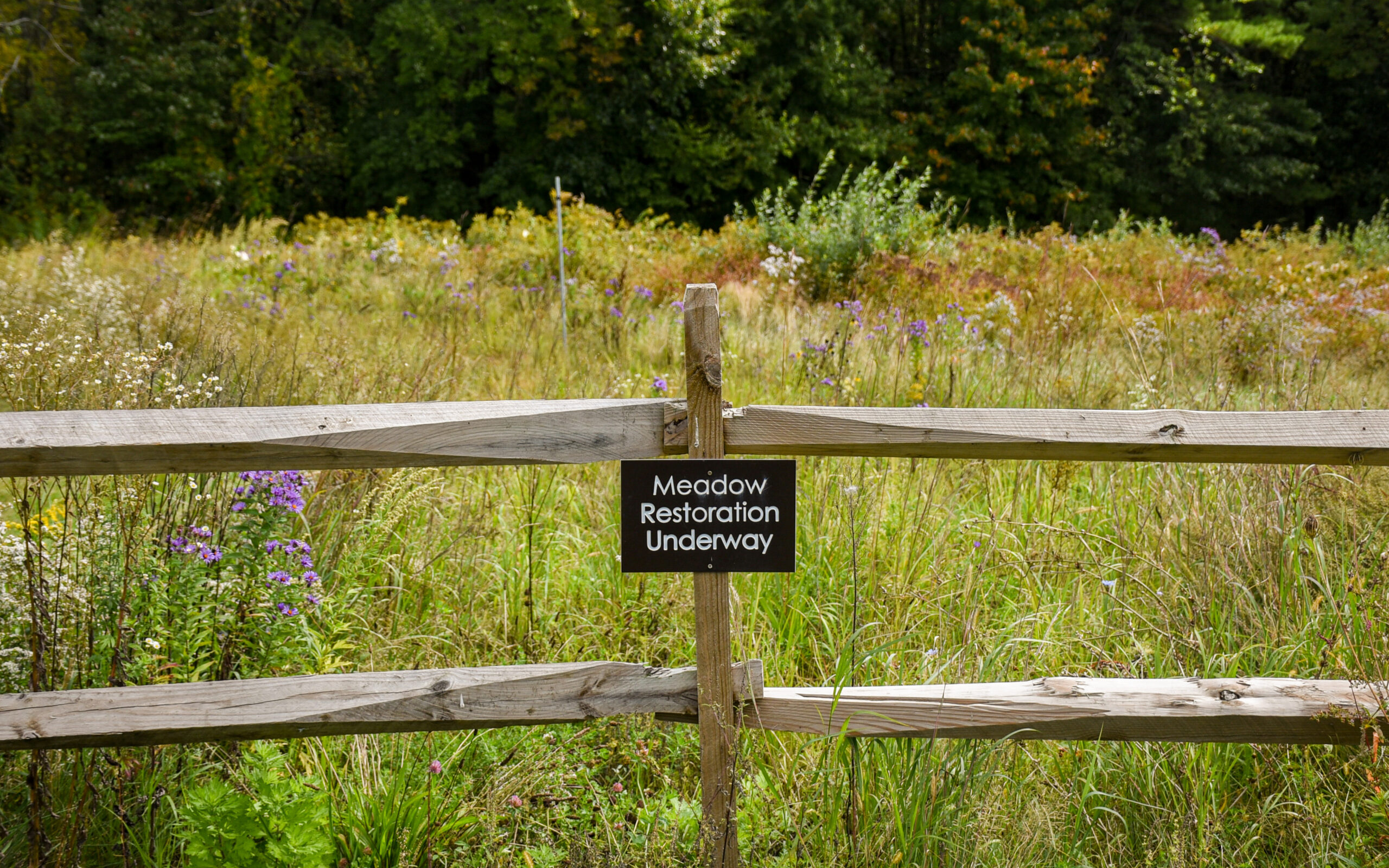Caring for the Land
The Garden rests on nearly 200 acres of protected wetlands, conserved woodlands, and public garden spaces. As we’ve grown and expanded over the years, our land care methods have also grown, evolving into the careful and ecologically minded approaches we take today.
Invasive Species Removal
Invasive plants are a common occurrence throughout the developed world. Species are considered invasive if they are not indigenous to a region and if their introduction causes, or can likely cause, harm to the environment, economy, or human health.
The Garden has faced a handful of invasive species over the years and it’s tough work. That’s because the horticulture team’s primary means of controlling these invasive species is through mechanical management—this means cutting, manually pulling problematic plants, and mowing. These removal techniques, carried out by staff and volunteers, cause less harm to the environment than other methods. Along with manual management, more aggressive invasive plants are sometimes met with targeted pesticide applications. Cut and paint, and hack and squirt methods are the two most used by the horticulture team. All invasive plants on the property are targeted using direct applications, which allows for the smallest environmental impact.
The Garden’s top invasive plant species include Asian bittersweet (Celastrus orbiculatus), multiflora rose (Rosa multiflora), burning bush (Euonymus alatus), Japanese honeysuckle (Lonicera japonica), and garlic mustard (Alliaria petiolato).
Stewarding the Land
The Garden is operated on roughly 200 acres, of which 19 is cultivated garden areas, 16 is meadows, and 145 is protected and conserved woodlands. Visitors are welcome to explore, hike, and enjoy other activities throughout our garden spaces.
Our horticulture team is responsible for mowing and clearing the formal and naturalistic gardens. For maintenance like this, the team uses a variety of electric-powered equipment such as string trimmers, leaf blowers, and a mower. In areas such as the meadows, mowing is a vital piece of work that occurs every few years and encourages development of successional habitat, places for plants and animals that rely on environmental disturbance. Learn more about meadow management at our blog. Meanwhile, in the naturalistic spaces, the horticulture team practices maintenance techniques that are minimally disruptive such as leaving the leaves on the ground once they have fallen from trees, sourcing native plants that were grown from the ecoregion, and leaving deadwood in order to create as natural an environment as possible for plants and wildlife.
Behind the scenes, the Garden works to ensure non-public land is protected and conserved. The Garden’s Land Steward is primarily responsible for these areas, mapping the grounds with software in order to identify potential problems before they become serious and species that should be preserved on the Garden’s expanding acreage.
Each day, the Garden continues to make strides toward becoming more sustainable. Click here to learn about our Sustainable Initiatives.




